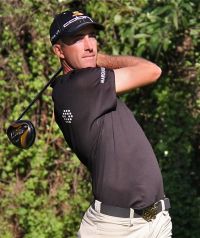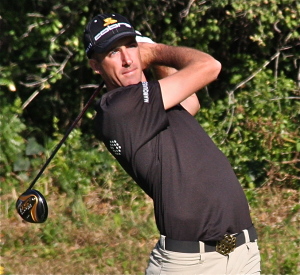"I'm not capable of hitting a drive that goes straight for 270 yards then turns sharply to the left."
/ John Huggan visited Augusta National recently, watched Geoff Ogilvy bat it around in wet conditions, and talked to the Aussie about different aspects of the course. A few highlights:
John Huggan visited Augusta National recently, watched Geoff Ogilvy bat it around in wet conditions, and talked to the Aussie about different aspects of the course. A few highlights:
"Some spots look bad at Augusta, but only when you are actually there do you realise that they may not be quite so awful," contends Ogilvy. "That's the genius of the greens. Certain spots look wrong but are actually right. And on every hole there is a spot off the green that is better than a bad spot on the green.
"Professionals spend their whole lives trying not to 'short side' themselves with their approach shots. But, at Augusta, that is sometimes the thing to do. Take the par-3 6th. If the hole is cut on the top tier to the back right, you are much better off missing on that side. Just off the green to the right is way better than on the green but down the bottom of the slope. The 7th green is similar. If the pin is on the left side, you are better to miss the green on that side than be on the green and right of the cup. You can easily putt off the green from there. And the 8th is the same. If the pin is back and left, missing the green long and left is a good spot to be in."
This obviously explains how No. 13's lengthening has changed the dynamics there.
The problem is that moving the tee back has almost eliminated the possibility of going sensibly for the green in two shots.
As Ogilvy said: "I'm not capable of hitting a drive that goes straight for 270 yards then turns sharply to the left."













